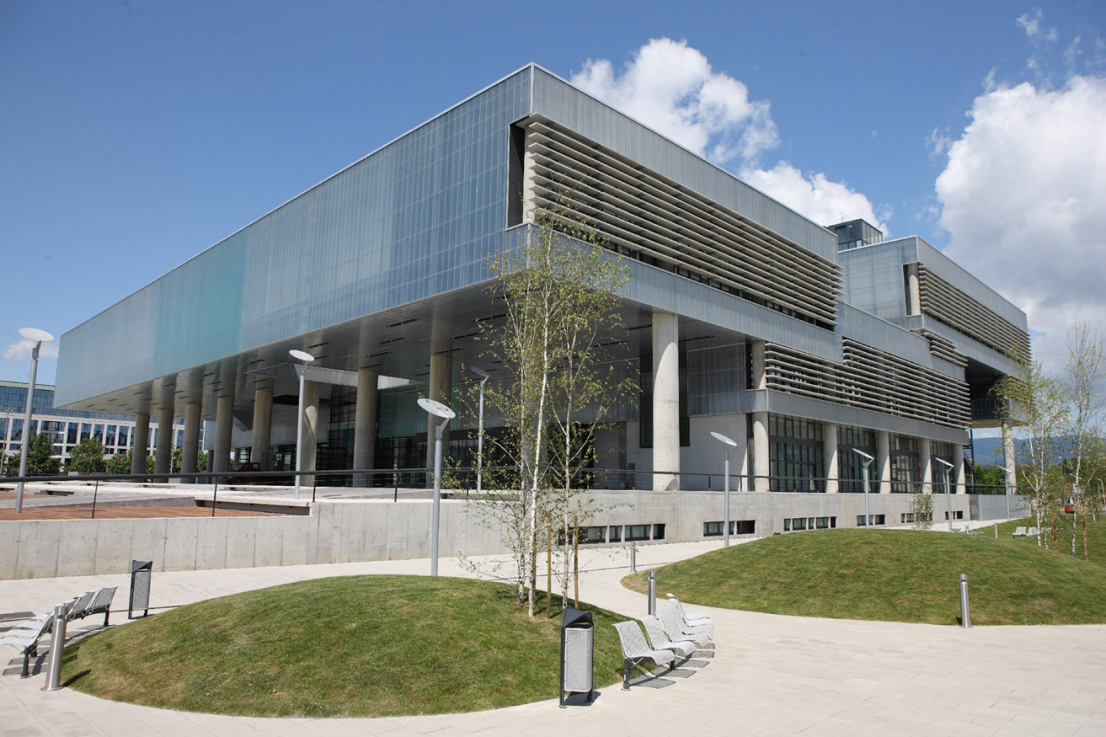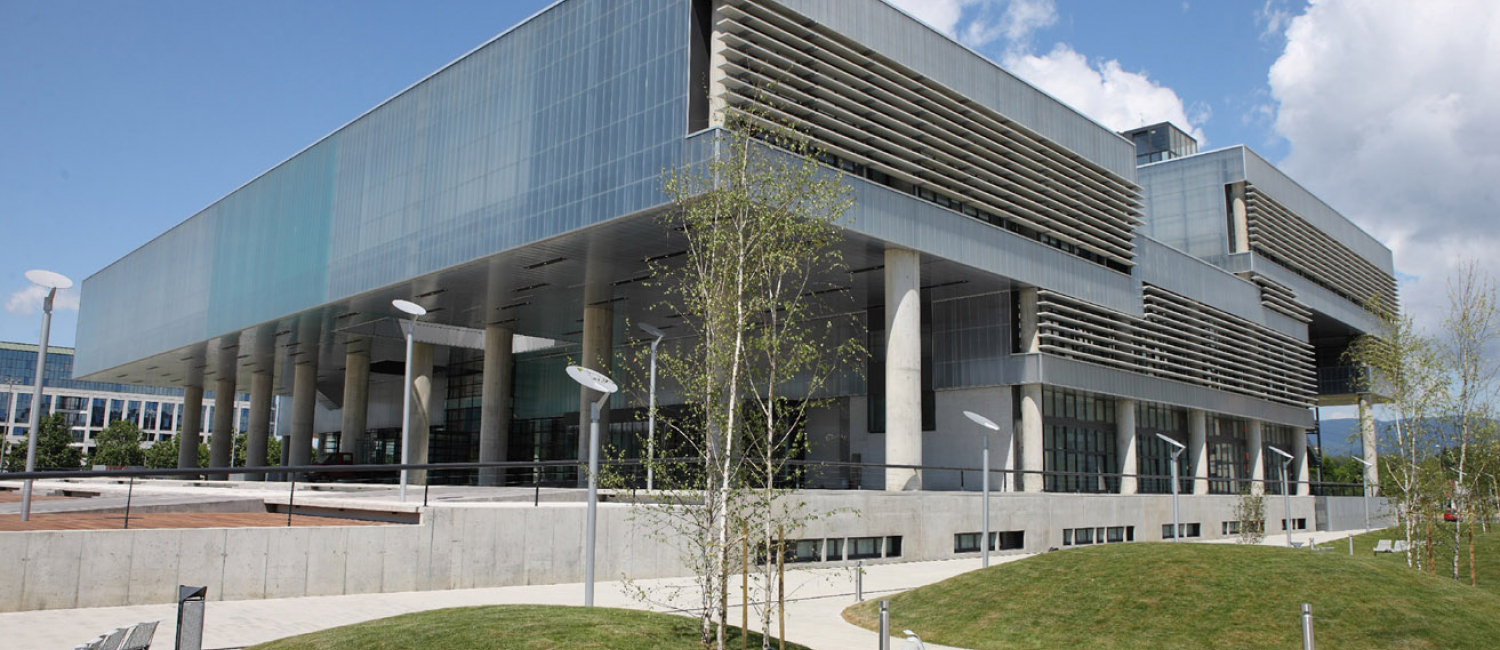The Museum of Contemporary Art Zagreb was founded in 1954 with the aim of following, documenting, and promoting events, styles, and phenomena in contemporary art. Since its very beginnings, its goal has been to assemble a relevant collection and to operate in accordance with modern principles of museology, catering to the needs of our times.
At first it was located in Kulmer Palace in the Zagreb’s historical centre. In 2003, the construction of a new museum building, designed by architect Ivan Franić, began.Referring to the tradition of functionalist architecture, Igor Franić planned a building that would stand on a major traffic route which is an important link between Zagreb’s historical centre and its new districts across the Sava River. The northern side of the building, overlooking the city park, is intended to host open-air exhibitions. The ground level is entirely dedicated to various facilities for visitors, including rooms for workshops in the visual arts, a library with a reading room, a smaller exhibition room, a multimedia auditorium, a museum shop, and a restaurant.
The exhibition rooms are located on three levels, and their variety promotes a flexible relationship between the permanent collection and the rooms for temporary exhibitions, offering various possibilities for realizing even the most demanding exhibition projects.
The new museum building will ensure not only adequate storage and the exhibition of its Collection, but also a great variety of programmes that will take place on a daily basis, including workshops in the visual arts, film projections, theatre performances, and concerts – making it possible for the Museum to become a vibrant meeting point for various types of audiences.
The collections of the museum include some twelve thousand contemporary artworks, created by Croatian and international artists between 1950 and the present day.
A minor part of the permanent collection includes artworks created during the first half of the twentieth century, the presence of which is crucial for the understanding of modern and contemporary art. Particular collections speak of the beginnings and development of various artistic movements, as well as their direct and indirect impact on subsequent phenomena in art.
The Museum includes the following collections: Drawings, Prints, Posters, and Works on Paper; Film and Video; Photography; Media Art; Sculpture and Painting.
The collection of Croatian and international art documents dominant movements, tendencies and stylistic currents such as abstract expressionism, geometrical and lyrical abstraction, informel painting, minimalism, proto-conceptualism, analytic and primary painting, Fluxus, conceptual art, monochrome painting, transavant-garde...thus reflecting the mission of the Museum with the focus on monitoring and covering novel tendencies in contemporary art
The richness of expression corresponds to the variety of media represented in our collections; apart from classic media – painting, sculpture, drawing, and graphics – the Museum possesses a series of works on the verge of particular media and works that examine their essence, such as objects, ready-mades, experimental film and video, conceptual photography, photo-installations, installations, site-specific works, luminokinetic objects, multimedia installations etc.
Among many important Croatian and international artists the collections of the Museum include artworks by: Dennis Adams, Marina Abramović, Christian Boltanki, Anette Messager, Dalibor Martinis, Sanja Iveković, Mladen Stilinović, Tomislav Gotovac, Josip Vaništa, Dimitrije Bašićević Mangelos, Jan Fabre, Andres Serrano, Oleg Kulik, Katarzyna Kozyra, Deimantas Narkevicius, Goran Trbuljak, Kristina Leko, Željko Kipke, André Cadéré, Joseph Beuys, Sonia Delaunay, IRWIN, Jimmie Durham, On Kawara, Nam June Paik, Rot Dieter, Kurt Schwitters, Chen Zhen...
Particular collections stand out for their specific and exhaustive treatment of their thematic and stylistic complexes, as well as for their international character such as the collection of constructivist and kinetic art, whose basis are the works by the representatives of the international movement New Tendencies (Julije Knifer, Ivan Picelj, Aleksandar Srnec, Vjenceslav Richter, Miroslav Šutej, Almir Mavigner, Otto Piene, Victor Vasarey, Piero Dorazio, Piero Manzoni, Jesus Raphael Soto).
The Museum also exhibits donations such as the complex and heterogeneous artistic collection of Benko Horvat, the harmonized surrealist lifework of painter Josip Seissel (donated by Silvana Seissel), as well as the special collection of architect Vjenceslav Richter and his wife, Nada Kareš Richter, located at their family house on Vrhovec no. 38. In 2006, the Museum obtained the Tošo Dabac Archive, located in the former studio of that legendary Zagreb photographer at Ilica no. 17. The latest large and complete acquisition was that of the entire Kožarić Atelier.
The specialized departments of the Museum include the Audiovisual Department, the Department of Experimental Research, Documentation and Information, the Library, the Education Department, the Performance and Exhibitions Department, the Restoration Department, Public Relations, and Marketing.
In our first presentation of the Collection, entitled Collection in Motion, the rich assortment of artworks of the Museum of Contemporary Art Zagreb will be introduced through a selection of six hundred pieces. We have grouped the representative examples of our Collection into units according to the proximity of their ideas and the inner links that interconnect these artworks regardless of the time and setting in which they were created.
Based on the premise that every work of art is a statement by its author about him- or herself and the surrounding world – art, society, the historical moment, religion, or politics – and that these artworks can be classified according to the different relationships they establish with the art world and the life world, we have presented them in five large units – Project and Destiny, Art as Life, Art on Art, The Great Enigma of the World, and Words and Images – as well as sixteen corresponding sub-groups.
These groups are named after significant titles of specific artworks from our Collection, such as For the Democratization of Art, Panorama for the Left and Right Eye, Recipes of the Brain, Exercises of the Will and Body, and others, indicating not only their individual artistic strategies, but also changes in taste and the historical moment in which they were created.
web: www.msu.hr

